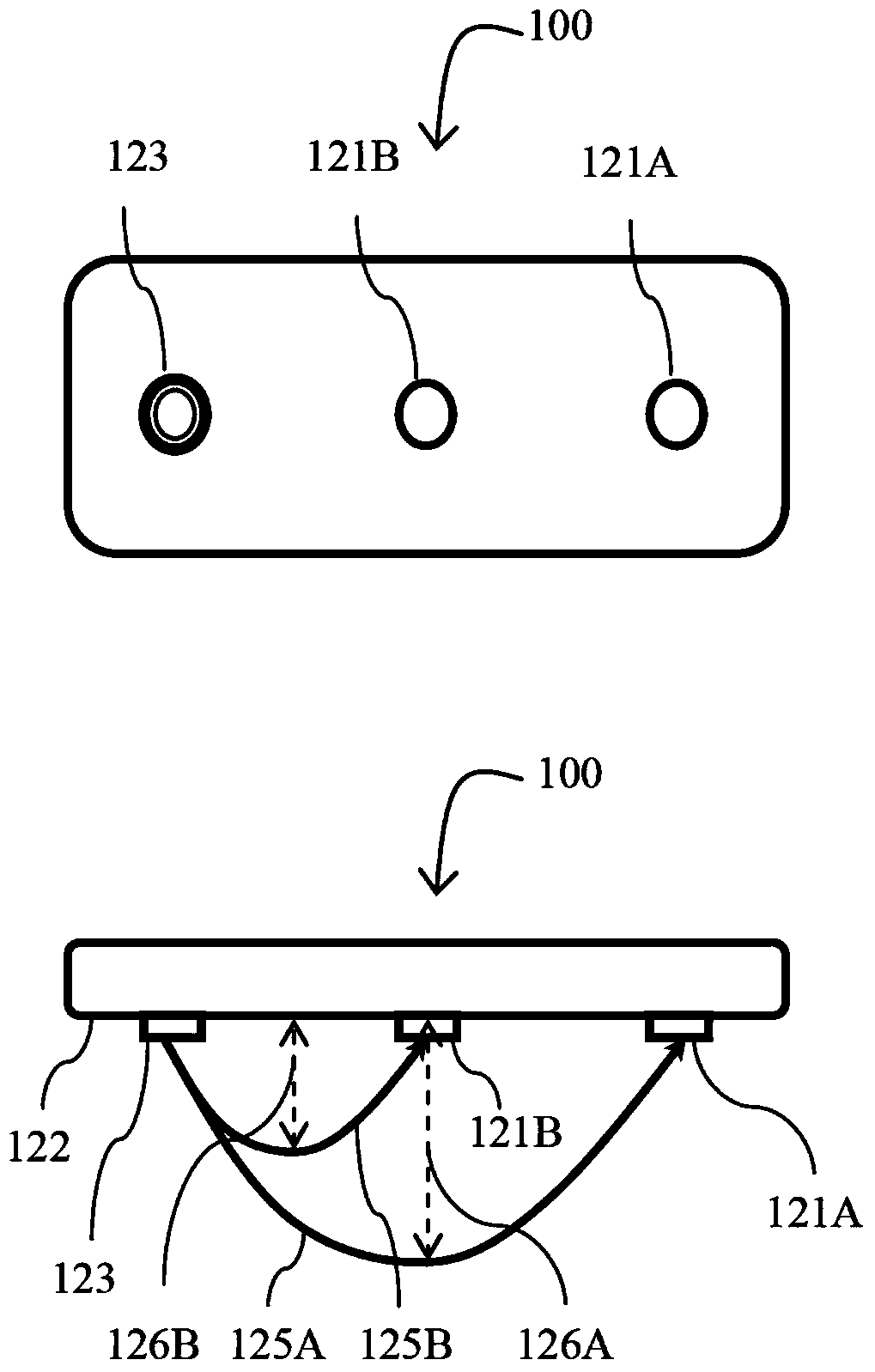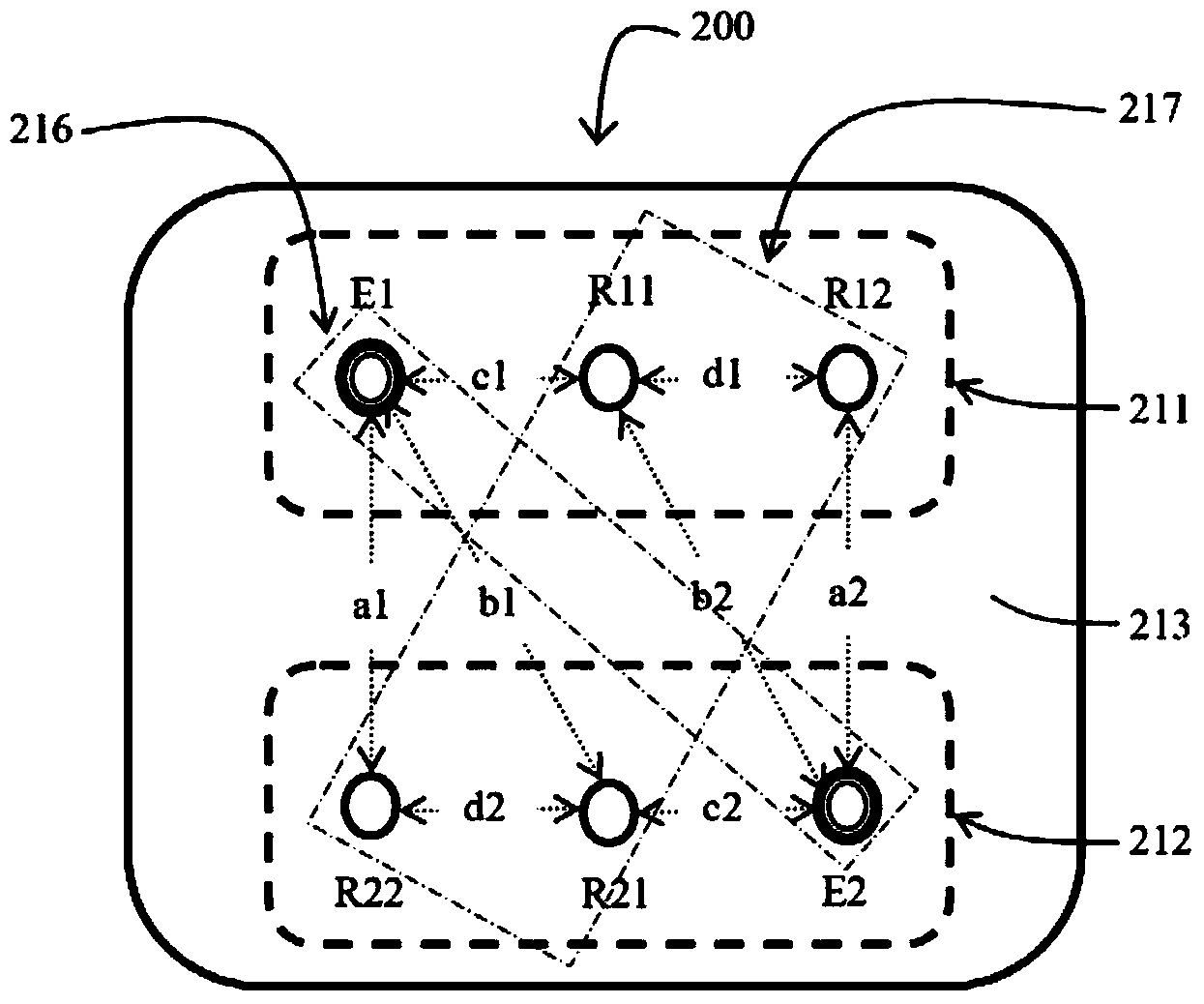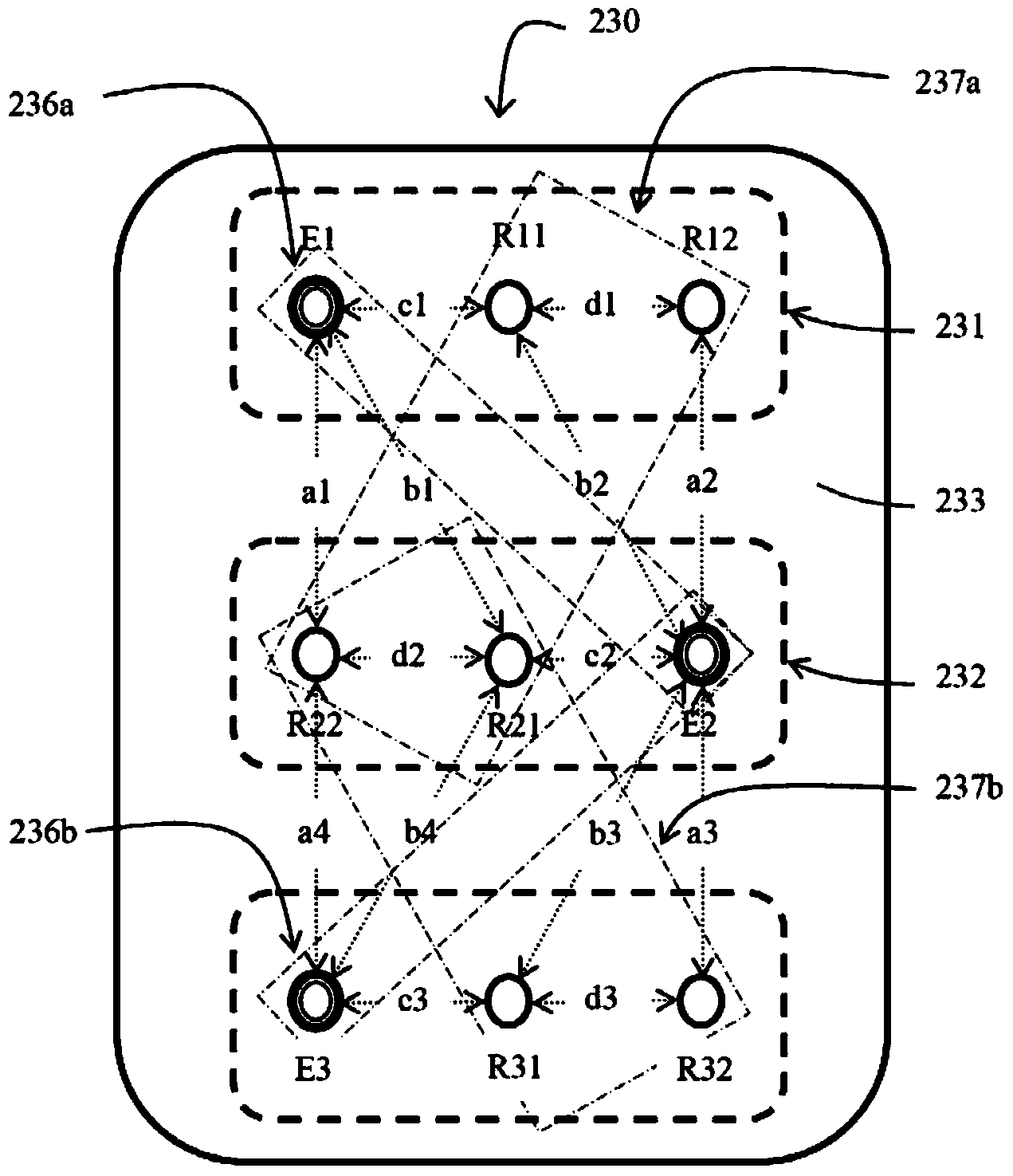Parallel near-infrared photoelectric sensing device and system and method for detecting organs and tissue of animals
A sensing device and near-infrared light technology, applied in the field of photoelectric sensing, can solve the problems of no sensor setting and calculation, difficulty in direct calculation, false information, etc.
- Summary
- Abstract
- Description
- Claims
- Application Information
AI Technical Summary
Problems solved by technology
Method used
Image
Examples
example
[0143] Figure 7 An example 500 of using a parallel near-infrared photoelectric sensing device based on near-infrared spectroscopy for detection of blood oxygen saturation in the brain is shown. The basic detection principle of instance 500 is as follows:
[0144] The application of blood oxygen saturation detection in the brain focuses on the detection of deep-level brain tissue. The detected information of deep-level brain tissue contains the information of shallow-level photosensitive substances, so multi-level three-dimensional detection can provide more accurate properties of the target organ tissue. like Figure 7 Shown is an implementation example of the present invention, wherein, placing a parallel near-infrared photoelectric sensor 510 in the target detection area, adjusting or pre-determining the distance between the transmitter 511 and the receiver 512, 513, can realize the shallow layer detection 520, And the main tissue to be tested is the cerebral cortex 530 ...
PUM
 Login to View More
Login to View More Abstract
Description
Claims
Application Information
 Login to View More
Login to View More - R&D
- Intellectual Property
- Life Sciences
- Materials
- Tech Scout
- Unparalleled Data Quality
- Higher Quality Content
- 60% Fewer Hallucinations
Browse by: Latest US Patents, China's latest patents, Technical Efficacy Thesaurus, Application Domain, Technology Topic, Popular Technical Reports.
© 2025 PatSnap. All rights reserved.Legal|Privacy policy|Modern Slavery Act Transparency Statement|Sitemap|About US| Contact US: help@patsnap.com



